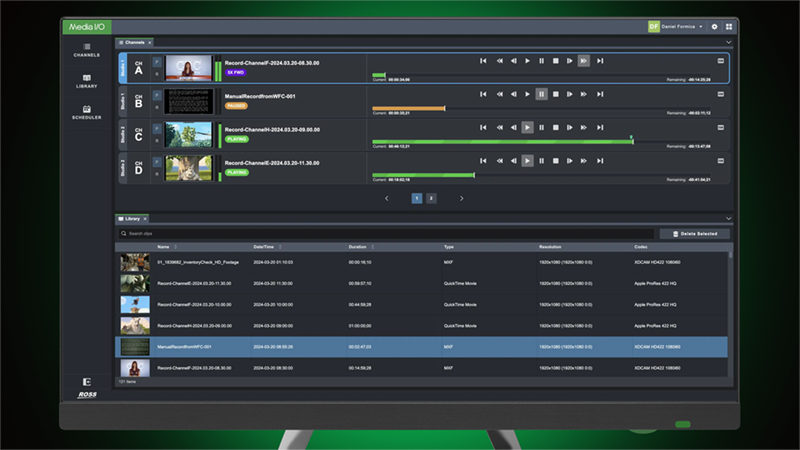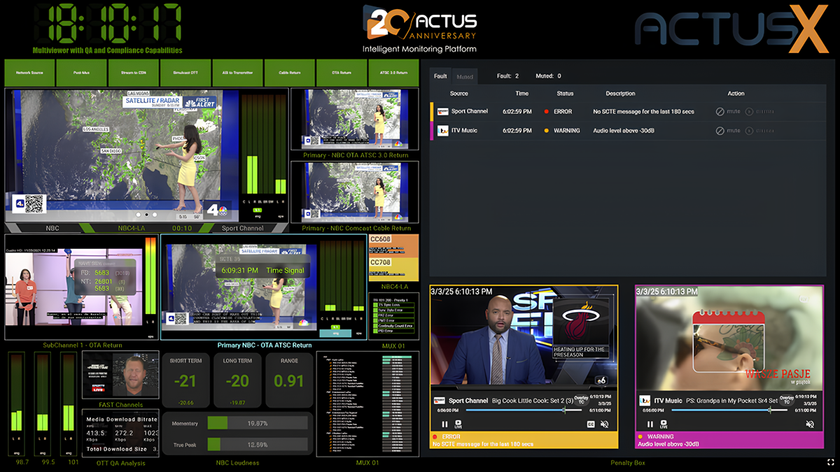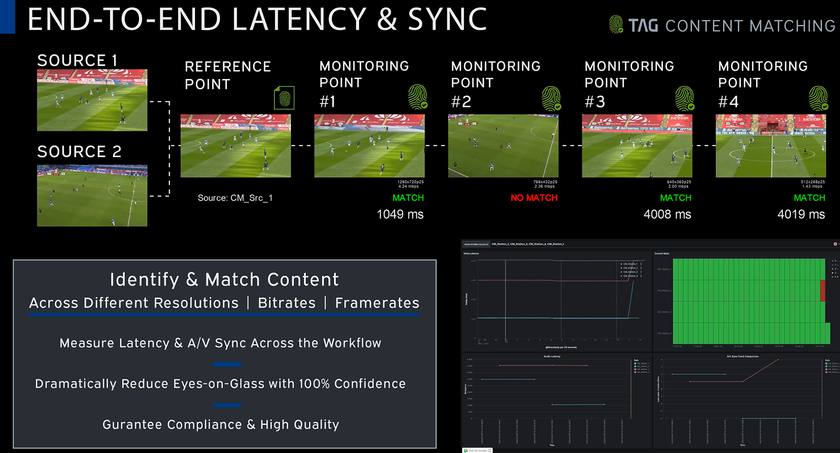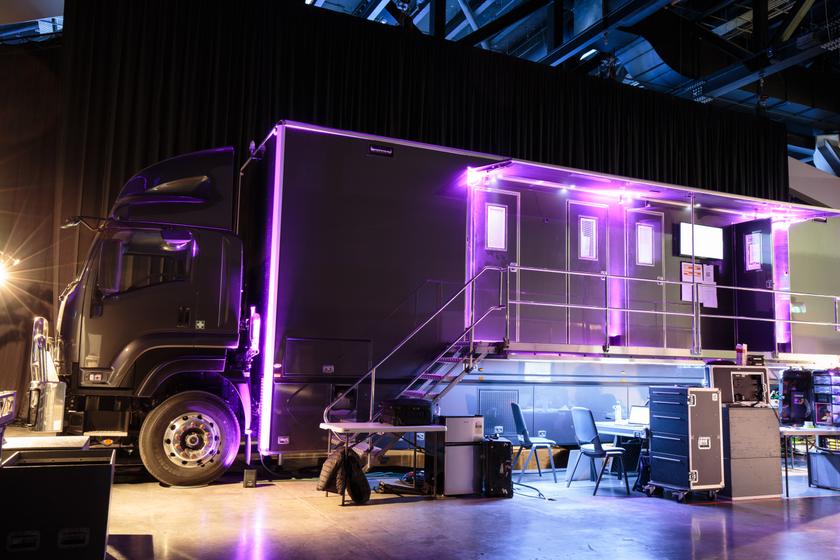Alexa, make IP Easy
The latest must-have in our household was an Amazon Echo. However, the Echo and Alexa performed perfectly for a short period and then abruptly stopped working. When aroused thereafter, Alexa would reply “I’m sorry, I’m having trouble connecting to the Internet right now.” After much googling and calls to Amazon and my ISP I was ready to present the rogue bot to Reggie, the family pooch, affectionately referred to as “the Shredder.” Luckily, I found an obscure blog from a hero (in my book) who had the same issue and crucially, as it turned out, the same router. He suggested splitting the 2.4G and 5G Wi-Fi networks, turning off linking and giving them separate SSID names. Put the iPad and Echo on 5G and everything else on 2.4G. Bingo ... it worked! Bob Marley for the rest of the evening, or what was left of it!
It struck me that our experience has parallels explaining the reticence by some towards the rollout of IP in the broadcast industry. Pure SDI workflows consist of several interconnected boxes. When pictures don’t emerge, it is usually obvious which box is the culprit. Likewise, IP networks comprise multiple boxes/devices, but here successful deployment doesn’t just rely on signal transport compliance to adopted standards (i.e. ST 2022-6, ST 2110, etc.), but at the device configuration layer, as well. Accommodating alternative Ethernet port configurations, speeds and other modes introduces considerable device inter-dependency at setup. One incompatible setting and you’ll have blank screens. In our case, the solution (or at least the fix) resided not in the newly added Echo (as I initially diagnosed with my SDI hat on), but settings in the router. All this could be enough to put anyone off, but in truth, IP is brilliant! I’m not going to rollout all the benefits I’m sure you’ve heard before but ― The Echo, Alexa and Amazon’s music database ― how about that for resource sharing?
End-to-end IP Portfolio
I pondered, while walking the Shredder, what might have improved our Echo/Alexa experience. I considered the broadcast IP solutions we offer at Grass Valley. GV’s extensive IP portfolio means you can source all the main IP devices, including a COTS IP switch (GV Fabric), from a single manufacturer. That’s everything, end-to-end, including Direct IP enabled cameras, switchers, standalone or modular video and audio processing devices through to IP multiviewers and IP-to-HDMI display converters. Surely things would have been a lot easier in my case if there were an equivalent single supplier in the domestic device market. Just like Grass Valley does for IP, everything would have been tested and device interoperability would have been verified. If nothing else, there’d be just one phone number to ring and no hopping between vendor service departments with each telling you to ring another. There’ll never be a single supplier for domestic devices, but it’s a nice thought.
Open Standards-based IP
On reflection, all my home devices must have adhered to formal networking standards for there to have been any chance of them working together. It’s inconceivable that this wouldn’t be so. Indeed, particularly in the domestic market, new standards must accommodate existing ones to prevent installed-device obsolescence. You’d think the same would be true in the broadcast industry, but with IP standards being slow to materialize, many proprietary and semi-proprietary IP solutions have emerged. That may be satisfactory in the short term, but it can lead to customers being tied to a specific vendor or vendors when upgrading or re-purposing, or necessitate potentially expensive custom software drivers for incompatible device additions and new control surfaces.
Today, customers want flexibility, ease of deployment and their IP systems to be future proof right from the start. From the beginning, Grass Valley adopted an open standards-based approach to IP for both signal transport and at the control layer. The underlying structure and topology of Grass Valley's IP solution, GV Orbit, was specifically designed to ensure ease of adoption of SMPTE and AMWA NMOS standards as they are released and ratified. The open architecture approach is now proving to be absolutely the right course, ultimately giving customers choice and keeping them in control.
Dynamic Orchestration
There were a few irritating things when adding the Echo and re-configuring my home network. All the devices had different (obviously) user interfaces, some of which were not particularly intuitive. I could put up with that, but perhaps most annoying was the need to reboot the router each time when making what seemed minor changes. This is something Grass Valley has really gotten right for the broadcast world.
The new GV Orbit Dynamic System Orchestrator for SDI, hybrid or pure IP systems amalgamates configuration, control and monitoring into a single unified package with a similar look and feel on all user screens. GV Orbit doesn’t restrict you to using all its functions and features if it doesn’t suit your workflow. You may, for example, have an existing router-control system with hardware panels installed that you don’t want to change. GV Orbit offers third party access via its northbound control facility using standard industry protocols. A clue to perhaps the best feature and benefit of GV Orbit is in the word “Dynamic.” In short, WYSIWYG (What You See Is What You Get!). GV Orbit allows you to make changes to your system on the fly, whether that be adding or removing devices, reconfiguring signal flows or simply renaming controls or indicators. There’s no more file copying or system downtime while waiting for system controllers to re-boot. Real-time, live-updating means fast & efficient deployment and re-purposing, saving valuable time and money! It makes GV Orbit perfect for OB (outside broadcast) environments, or any continually revolving production scenario. GV Orbit is supplied on a 24” deep 1RU server with all software pre-installed.
Finally, I can report that the Shredder had to make do with one of my old slippers, but at least he could chew on it listening to Bob Marley, courtesy of Alexa. Research conducted (circa 2017) by the Scottish SPCA and the University of Glasgow in the UK found that reggae and soft rock came out as the best genres for reducing a dog’s stress, barking and heart rate.
Get the TV Tech Newsletter
The professional video industry's #1 source for news, trends and product and tech information. Sign up below.













